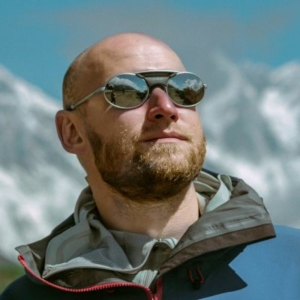Is UV Radiation Higher at Altitude?

If you’re getting ready to ‘climb every mountain’, you need to be prepared. Even though you may find the temperatures a bit cooler, the higher altitude means you are actually more exposed to UV radiation from the sun, because the sun’s ultraviolet rays are stronger at higher elevations.
UV radiation – the science
Ultraviolet (UV) radiation is a form of electromagnetic radiation that is invisible to the human eye. It is emitted by the sun and can also be produced by artificial sources such as tanning beds. UV radiation is divided into three bands: UVA, UVB, and UVC.
- UVA has the longest wavelength and is the least harmful type of UV radiation. It can cause premature skin aging and wrinkles, but it is not known to cause skin cancer.
- UVB has a shorter wavelength than UVA and is more harmful. It can cause sunburn, skin cancer, and cataracts.
- UVC has the shortest wavelength and is the most harmful type of UV radiation. However, it is almost completely absorbed by the ozone layer and does not reach the Earth’s surface.
UV radiation levels increase at higher altitudes because there is less atmosphere to absorb the UV radiation.
This has a surprising impact:
- UV radiation exposure increases 4-5% with every 1,000 feet above sea level.
- For every 1,000 meters (3,280 feet) of altitude, UV levels increase by about 10%.
This means that people who live or travel at high altitudes are at a greater risk of exposure to harmful UV radiation and need to take extra precautions to protect themselves from the sun.
High altitude sun protection tips
Here are some tips for protecting yourself from UV radiation at high altitudes:
- Wear sunscreen with an SPF of 30 or higher.
- Reapply sunscreen every two hours, or more often if you are sweating or swimming.
- Wear sunglasses that block 99% of UVA and UVB rays.
- Wear a hat that shades your face, ears, and neck.
- Avoid being in the sun during the middle of the day, when UV levels are highest.
- Seek shade whenever possible.
By following these tips, you can help protect yourself from the harmful effects of UV radiation at high altitudes.
In addition to the tips above, there are a few other things to keep in mind when it comes to UV radiation at high altitudes:
- Clouds do not block all UV radiation. Even on cloudy days, it is important to protect yourself from the sun.
- Snow reflects UV radiation, so it is especially important to wear sunscreen and sunglasses when skiing or snowboarding.
- People with fair skin are more sensitive to UV radiation and are at an increased risk of sunburn and skin cancer.
By taking the necessary precautions, you can enjoy the outdoors at high altitudes without putting your health at risk.
Skin and mole checks
It’s important for everyone to get into the habit of checking your skin regularly. Look for new moles or moles that look odd in someway e.g. misshapen, jagged or a weird colour. Dr Ross Perry always advises patients to be alert to the the ‘ugly duckling’ sign – the ‘odd one out’ that makes a mole different to the others.
In case of concern, the first step is to visit the GP to assess the mole and either rule out skin cancer or arrange a referral as appropriate.
If the mole turns out to be cosmetic (i.e. non-cancerous), private consultations and mole removal are an option.
Private Mole Checks & Removal
The London Mole Removal Centre is a private company, offering private mole checks and mole removal treatment for unwanted moles. The experienced doctors and surgeons also offer removal treatment for a range of other skin lesions (e.g. cysts, skin tags, warts, verruca, lipoma, xanthelasma).
All consultations and treatments are carried out in person by doctors who are specially trained in the latest laser and skin surgery techniques and are highly experienced in the field.
Further advantages of private treatment at the London Mole Removal Centre include:
- No waiting lists
- Fully trained doctors, registered with GMC
- Moles can often be removed in the same appointment as the consultation, saving the need for a repeat visit and allowing patients to get their skin lesions removed very quickly
- Choice of 4 clinics in London plus one in Bristol
- Removed moles tested with report provided
For more information or to book a consultation, please complete the form on this web page or call 020 7731 3791.


